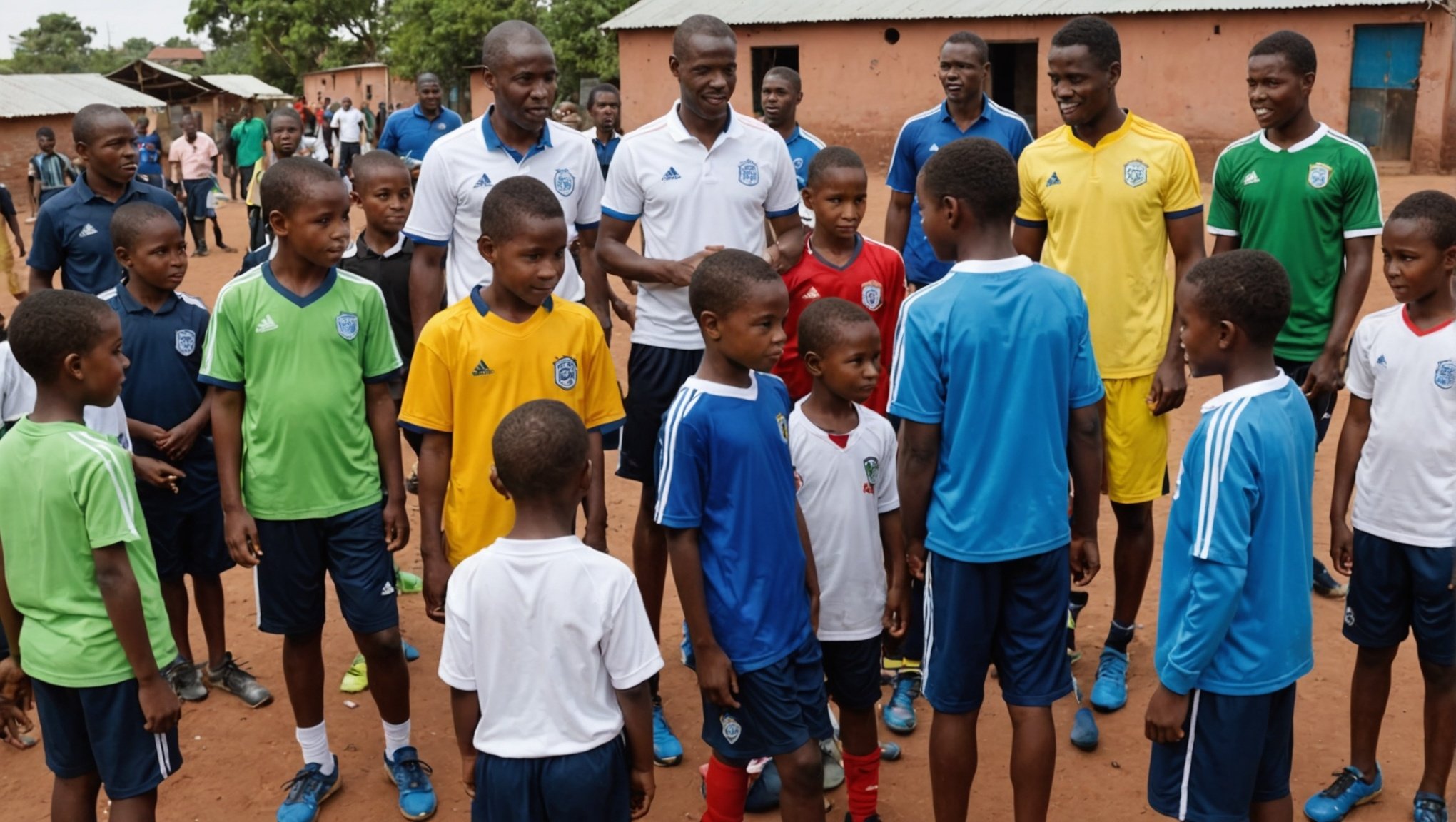Understanding Community Engagement in Football
Community engagement is increasingly vital for football clubs, directly influencing their success and sustainability. Recognising their role within the locality, clubs use this relationship to bolster local development, both socially and economically. Football, with its universal appeal, offers a unique platform for fostering community spirit and solidarity.
The impact of these engagements extends beyond simple outreach—it enhances the club’s reputation and strengthens its connection with the supporters. Successful football clubs often implement community-focused initiatives, which include youth training programmes, charity events, and educational schemes. Such initiatives not only promote healthy lifestyles and skills among the youth but also drive positive social change.
Also read : Unlocking New Fan Engagement: Leveraging eSports for Football Clubs to Connect with Younger Audiences
Examples of effective engagement are evident across various clubs globally. For instance, many clubs partner with schools to develop sports programs that promote mental and physical well-being. This mutually beneficial relationship helps clubs identify promising young talents while supporting the educational system.
Additionally, through active involvement in local development projects, clubs contribute significantly to the community’s economic stability. Engagement efforts can be an avenue for fans and residents to rally around their team, cultivating loyalty and long-term support.
Also to see : Unlocking Player Potential: Harnessing Machine Learning for Predicting Football Performance
Ultimately, community engagement solidifies a football club’s role as a central figure in local development and fortifies its bond with the fans.
Strategies for Effective Engagement
Connecting with the community involves effective engagement strategies that resonate both widely and deeply. These strategies serve as a bridge to create meaningful, lasting relationships with local entities.
Developing Partnerships with Local Organizations
To foster sustainable connections, identifying local partners such as schools and charities is essential. These collaborations are not just about mutual objectives but are enriched by shared values. By establishing clear goals, organizations can benefit from shared resources, enhancing community impact. Local partners bring unique insights into community needs, setting the stage for tailored programs that reflect the community’s desires.
Implementing Outreach Initiatives
Designing community outreach programs that attract local participation is key. Engaging local youth through coaching clinics offers both educational and recreational benefits. These clinics can be more impactful by involving community leaders as role models. Furthermore, utilizing social media as a platform for outreach significantly amplifies the reach, enabling real-time interaction and engagement with a broader audience.
Offering Inclusive Community Programs
To be truly effective, community programs must be inclusive, reflecting diverse community needs. Tailoring these initiatives ensures that every segment of the community feels involved. The accessibility factor cannot be overlooked—programs must be both physically and economically accessible to all. Highlighting the role of community programs in promoting health and fitness reinforces their value, encouraging wider participation.
Case Studies of Successful Community Engagement
Exploring case studies of successful community engagement in the football arena provides invaluable insights into the power of teamwork off the field. Such initiatives often reflect the heart of a football community committed to positive social impact. Prominent clubs like Manchester United and FC Barcelona have spearheaded several outstanding success stories.
At Manchester United, the “United for Change” program focuses on local empowerment through education and sports, creating ripple effects throughout their community. They’ve connected with over 20,000 youths, enhancing academic performance and social skills. Similarly, FC Barcelona’s “Barça Foundation” has used sport as a tool for social integration, addressing issues like bullying and social exclusion.
In-depth analysis reveals that the hallmark of these success stories lies in aligning club initiatives with community needs. Manchester United’s educational workshops are designed in collaboration with local schools, ensuring relevancy and engagement. FC Barcelona’s focus on inclusivity champions global causes, reaching diverse demographics.
Crucially, these success stories teach us the importance of authentic and sustained interaction. Regular feedback loops and community partnerships have been pivotal, serving as a blueprint for future initiatives. Successful clubs demonstrate that by fostering genuine connections, tangible benefits extend well beyond the pitch, embedding clubs as integral community pillars.
Measuring Impact and Outcomes
In today’s dynamic environment, it is essential to focus on impact measurement to ensure community benefits from football clubs’ initiatives. Accurate evaluation requires careful planning, especially when establishing metrics for success.
Establishing Metrics for Success
Setting key performance indicators (KPIs) is the foundation of effective impact measurement. Identifying KPIs involves determining what aspects of the initiative need to be evaluated. This could include participation rates, satisfaction levels, or economic benefits to the community. Once identified, apply robust techniques for collecting and analyzing data, such as surveys or digital analytics. After data analysis, reporting outcomes to stakeholders becomes crucial. This transparency not only demonstrates accountability but also strengthens trust and justifies resources spent.
Overcoming Challenges in Engagement
Football clubs frequently face challenges such as limited resources and diverse community needs. Overcoming these requires strategic management of obstacles through creative solutions. One method is to design flexible programmes that can adapt based on community feedback and experience. Adaptability, paired with effective feedback loops, ensures that initiatives remain relevant and impactful.
Building Long-Term Relationships
Sustaining community connections revolves around ongoing engagement and transparent communication. Involving the community in planning demonstrates investing in their needs, increasing project buy-in. Regular assessments of feedback contribute to enriched relationships and the development of future projects. This approach fosters a deeper connection with the community, paving the way for long-term success.
Resources and Tools for Implementation
Embarking on a community engagement project necessitates a set of carefully selected resources and tools. Clubs can access a wide range of implementation tools specifically designed to facilitate the successful execution of their initiatives. These tools often include digital platforms for project management, communication software for seamless coordination, and templates that aid in structuring activities efficiently.
To further support these efforts, a variety of engagement guides and toolkits are available, providing step-by-step instructions and best practices tailored to community programs. These guides help ensure that clubs can effectively plan, execute, and measure the impact of their projects. Offering practical advice and real-life applications, these resources become instrumental in overcoming common challenges encountered during implementation.
In addition to tools and guides, participating in local community forums offers valuable networking opportunities. Such forums connect various groups and individuals, encouraging the sharing of experiences, ideas, and solutions. By engaging with these forums, clubs enrich their understanding and can form collaborations that enhance their initiatives.
Through strategic use of these implementation tools and resources, community programs are not only more organized but also more impactful, ensuring lasting benefits.










